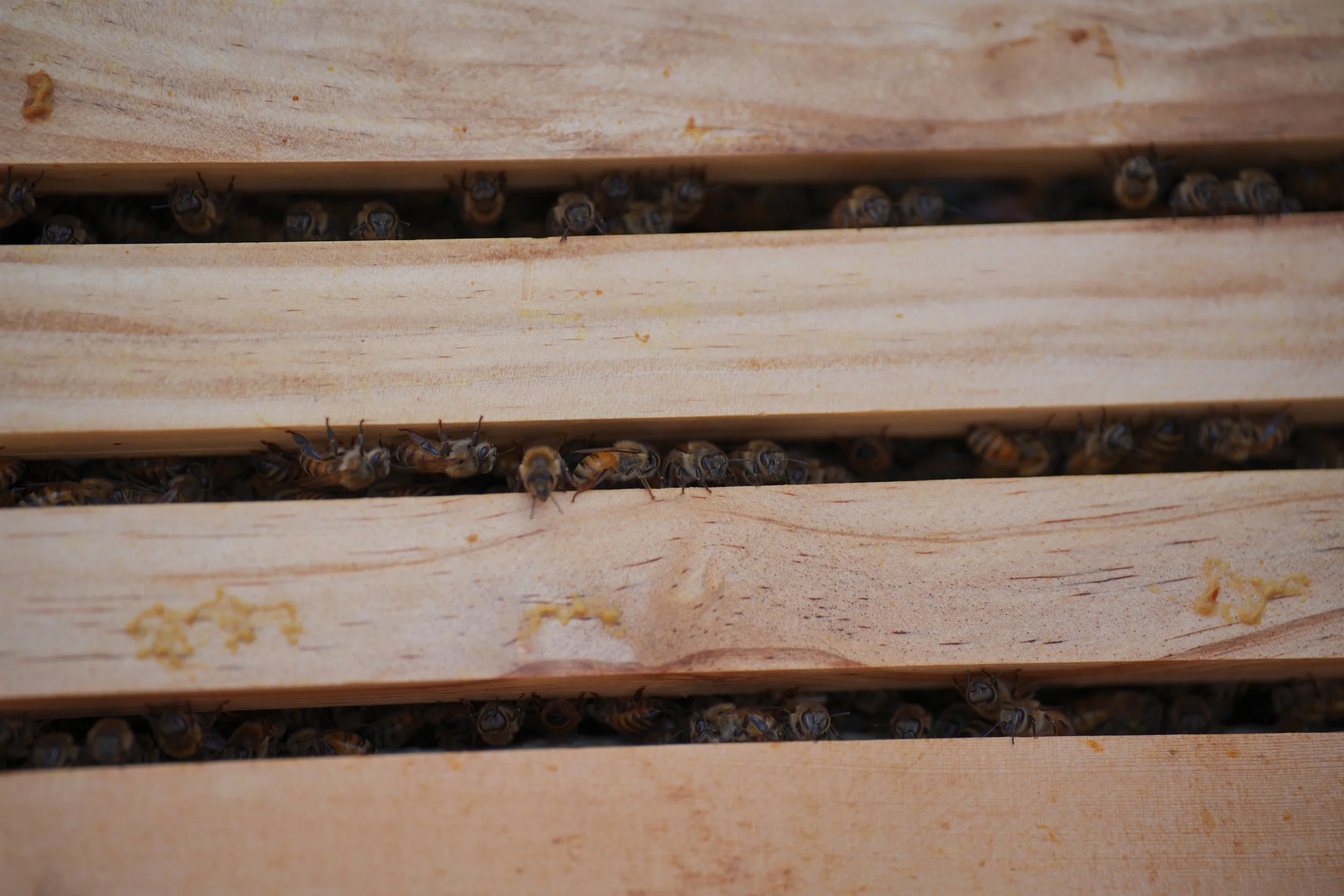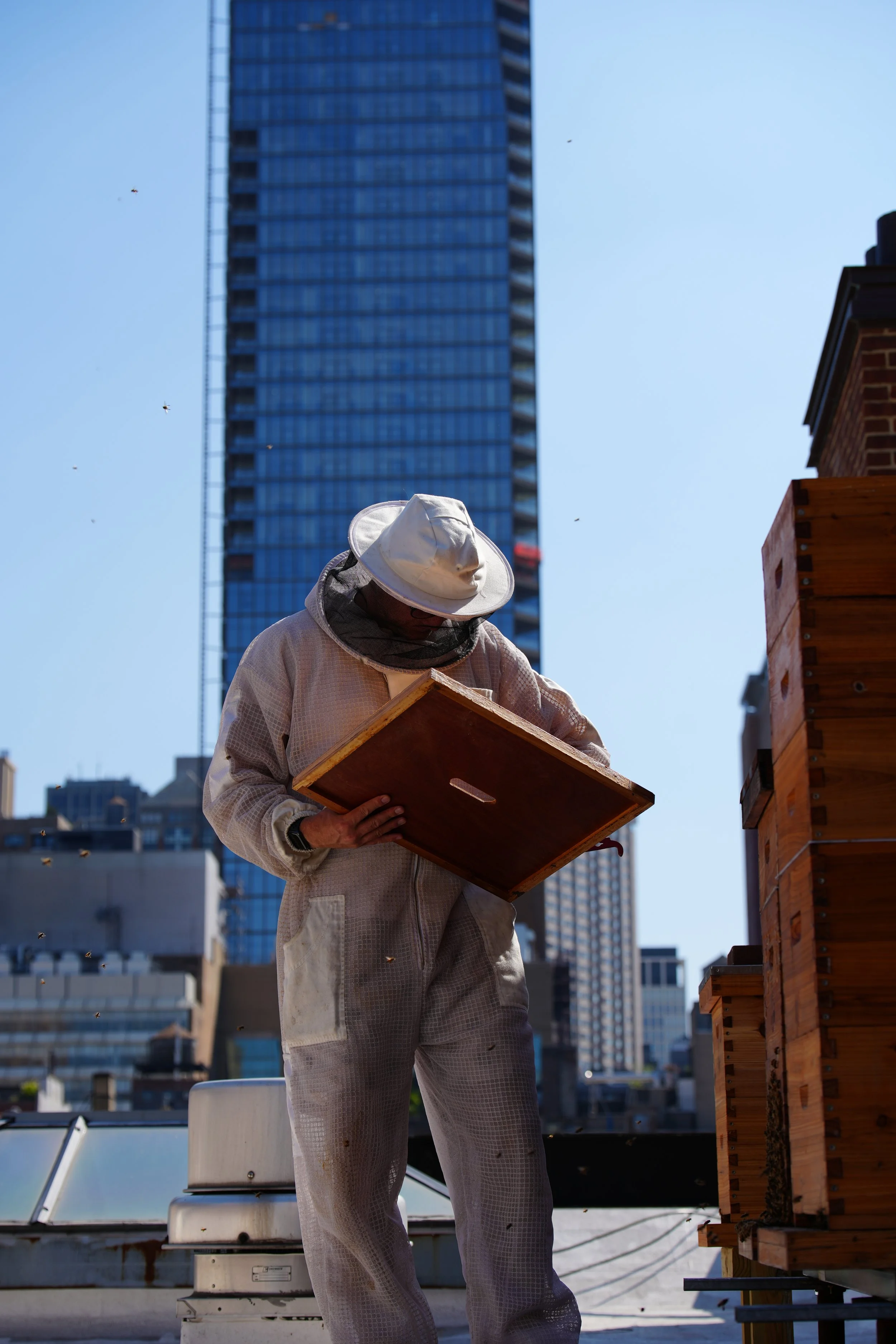Why NYC Honey Might Be Cleaner Than Rural Honey
It may come as a surprise, but honey produced in New York City may actually be cleaner and less contaminated than honey from rural agricultural regions.
That’s because NYC is not an agricultural zone — meaning there’s no large-scale monoculture farming or routine pesticide and herbicide spraying happening in the areas where bees forage. In contrast, bees in rural zones often collect nectar and pollen from crops that are heavily treated with chemicals like glyphosate, neonicotinoids, and fungicides, all of which can make their way into the hive and the honey.
In fact, independent studies conducted in cities like New York, London, and Paris have found that urban honey contains significantly lower levels of chemical residues than honey sampled from commercial farmland.
“Urban honey often contains fewer chemical residues than rural honey (Démares et al., 2022).”
This is likely due to:
The absence of agrochemicals in urban ecosystems
Bees foraging on a wide range of ornamental and native plants from parks, gardens, and rooftops
A diverse, decentralized forage zone with no single source of potential contamination
In Other Words...
NYC bees are collecting nectar from flowering trees, community gardens, rooftop planters, and wild greenspaces — not from fields sprayed with synthetic chemicals. As a result, urban honey is not only flavorful, it’s remarkably clean.
Humans have been cultivating and enjoying honey for over 10,000 years, making it one of the world’s oldest natural treasures.
Our honey comes from beehives maintained on a rooftop adjacent to Central Park. What started as a personal beekeeping project has grown into something special as neighbors and friends began asking to purchase our harvest.
Manhattan might seem like an unlikely place for honey production, but urban environments can actually provide diverse foraging opportunities. Our bees have access to over 800 acres of Central Park, plus street trees, rooftop gardens, and community green spaces throughout the Upper West Side.
Our Honey
City Hive Honey bees forage within a three-mile radius, primarily drawing nectar from Central Park's extensive tree canopy and the neighborhood's residential gardens. The primary nectar sources include linden trees (June-July), black locust (May), tulip trees (May-June), and seasonal wildflowers and ornamental plants year-round.
Like wine, honey reflects its environment. Spring honey tends to be lighter and more floral, while late summer harvests are typically darker and more robust. Each batch varies slightly based on weather patterns, bloom timing, and what our bees choose to forage.
Our Process
Each hive is inspected regularly to ensure bee health and optimal honey production. Frames are harvested only when honey is fully capped and moisture content is below 18%—the standard for premium raw honey.
After extraction using a centrifugal spinner, the honey is gravity-strained and allowed to settle before being jarred without any heat treatment or ultra-filtration. The entire process from hive to jar preserves the natural enzymes and flavor compounds that make raw honey unique. Every batch is hand-harvested and processed the same day.
Why Our Honey Costs More Than Store-Bought Honey
Most supermarket honey is blended, ultra-filtered, and often imported in bulk from overseas. It’s processed for consistency and shelf-life, but at the cost of losing much of the flavor, pollen, and natural enzymes that make honey special.
Our honey is different. Every jar comes directly from our rooftop hives in New York City. The bees forage on a rich mix of wildflowers, trees, and urban gardens—giving each harvest its own seasonal character. We never heat-treat or over-filter, which means the pollen, enzymes, and antioxidants stay intact.
Small-batch harvesting is slower and more hands-on. From adding supers to carefully removing frames without harming the bees, to hand-pouring into glass jars, every step takes time and care. We also invest in eco-friendly packaging, and reusable jars—choices that cost more but align with our values.
When you buy our honey, you’re not just buying something sweet—you’re supporting sustainable urban beekeeping, healthier pollinator populations, and the preservation of local biodiversity. It’s raw, unblended, and exactly the way the bees made it.
That’s why our honey carries a higher price tag: because it carries real value.

—
From Flower
to Honey
—
Unlike honey from monoculture farms, NYC honey is infused with exceptional botanical variety. Our bees forage from tree-lines streets, public parks, rooftop gardens, backyard plots, and flowering balconies - giving each jar a complex ever-changing flavor profile that reflects what’s blooming across the city.
Pure Essential Oils
No synthetic fragrances used in any of our skincare products.
Flowers
Red maple, Silver maple, Honey locust, Tulip tree, Black cherry, Sumac, Willows, Basswood, Buckeye, London plane, Norway maple, Goldenrod, Asters, Joe‑Pye Weed, Cardinal Flower, Helenium, Phlox, Liatris, Anise Hyssop…
Beeswax
Straight from the hive. Pure and simple.
